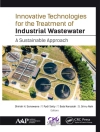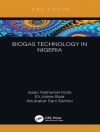This book provides a wide-range exploration on the ongoing research and developmental events in environmental nanotechnology. Emerging nanomaterials and its technology have been known to offer unique advantages and are continually showing promising potential attracting continuous global attention. This work thus discusses experimental studies of various nanomaterials along with their design and applications and with specific attention to chemical reactions and their challenges for catalytic systems. It will make a noteworthy appeal to scientists and researchers working in the field of nanotechnology for environmental sciences.
Table of Content
1. Current role of nanomaterials for environmental remediation.- 2. Recent Advances in Nanomaterials for Wastewater Treatment.- 3. Nano-metal oxides for antibacterial activity.- 4. Nanomaterials for advanced analytical applications in chemo- and biosensors.- 5. Surface-modified conducting polymer based-nanostructured materials for removal of toxic heavy metals from wastewater.- 6. Biological effects of green synthesized metal nanoparticles: A mechanistic view on Antibacterial activity and Cytotoxicity.- 7. Surface plasmon-based nanomaterials as photocatalyst.- 8. Polymer Based Magnetic Nanocomposites for the Removal of Highly Toxic Hexavalent Chromium from Aqueous Solution.- 9. Nanomaterials as an immobilizing platform for enzymatic glucose biosensors.- 10. Innovations in Antimicrobial Engineered Nanomaterials.- 11. Exploitation of nanoparticles as photocatalysts for clean and environmental applications.- 12. Nanoparticles: Antimicrobial Applications and its Prospects.-13. Organic and Inorganic Hybrid Diglyciyl/tetraglycidyl Epoxy-containing Nano-coatings on Mild Steel for the Corrosion Protection and its Microbial Prevention.












